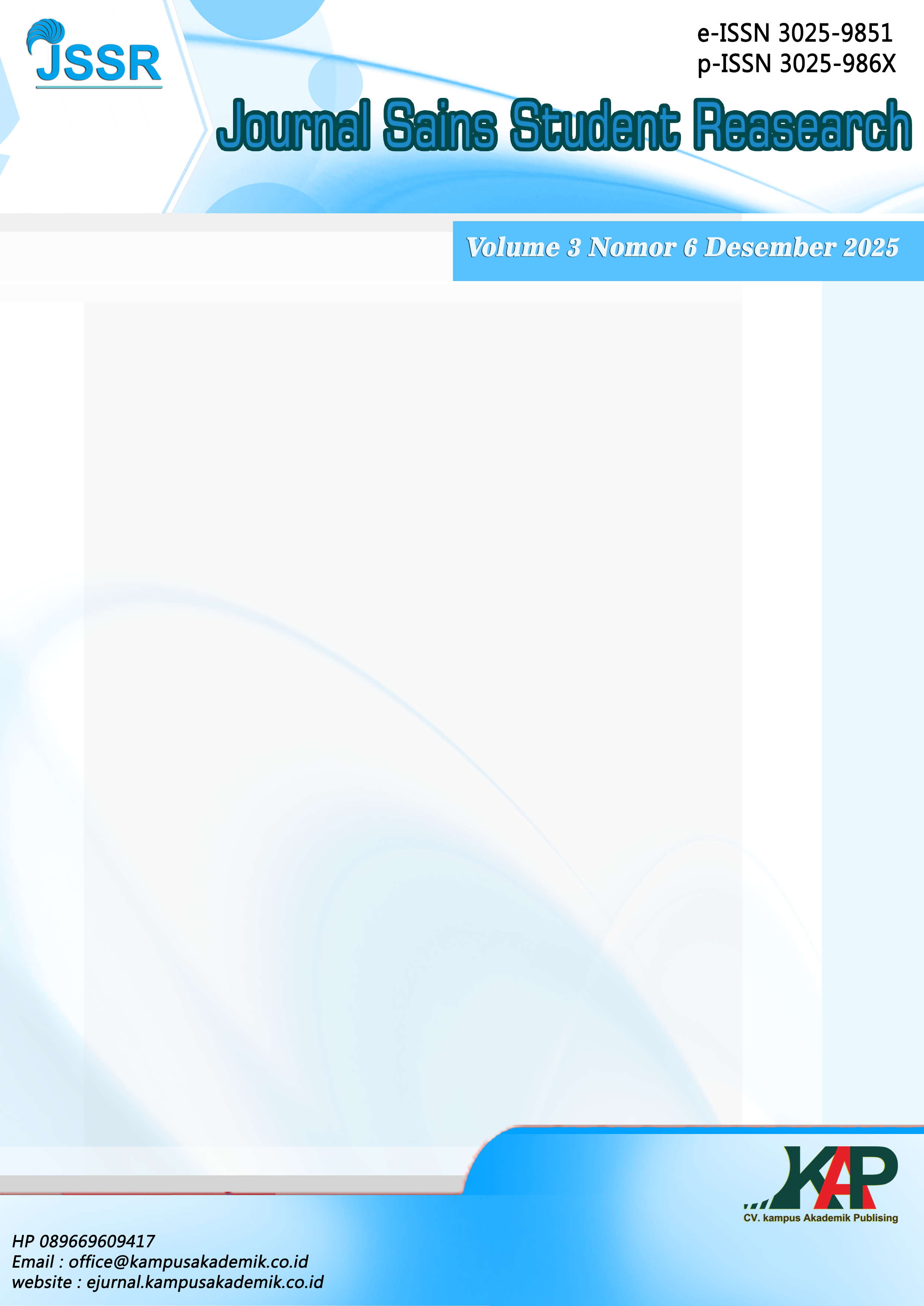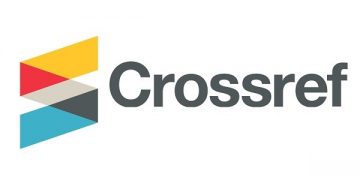Comparison Naïve Bayes and SVM to Classify Drought-Infected Rice Plants Based on Morphological Characteristics in Supporting National Food Security
DOI:
https://doi.org/10.61722/jssr.v3i6.6557Keywords:
Rice Plant, Modelling, SVM, Naïve-BayesAbstract
Data mining is part of the Knowledge Discovery in Database (KDD) process. The use of data mining serves to classify, predict, and extract other useful information from large data sets. This study aims to classify rice plants under treatment (drought stress and control) using data mining, focusing on the analysis of the variables of Leaf Area (LA), Root Length (RL), and Shoot Length (SL). Each classification algorithm has different characteristics, resulting in varied performance results. After testing both classification algorithms, the accuracy results were 71.70% for Naïve Bayes and 73.85% for SVM. This shows that the SVM algorithm performs better than Naïve Bayes algorithms to determine best treatment of rice to support national food security further. Furthermore, It also can be concluded that using a machine learning approach can solve problems in the classification of rice plants affected by drought threats is fairly effective with the maximum score obtained is only 73.85%.
References
Abdullah, D. M., & Abdulazeez, A. M. (2021). Machine Learning Applications based on SVM Classification: A Review. Qubahan Academic Journal, 1(2), 81–90. https://doi.org/10.48161/qaj.v1n2a50
Alfred, R., Obit, J. H., Chin, C. P. Y., Haviluddin, H., & Lim, Y. (2021). Towards paddy rice smart farming: A review on big data, machine learning, and rice production tasks. IEEE Access. Institute of Electrical and Electronics Engineers Inc. https://doi.org/10.1109/ACCESS.2021.3069449
Anggrawan, A., Hairani, H., & Satria, C. (2023). Improving SVM Classification Performance on Unbalanced Student Graduation Time Data Using SMOTE. International Journal of Information and Education Technology, 13(2), 289–295. https://doi.org/10.18178/ijiet.2023.13.2.1806
Chen, F., Yu, L., Mao, J., Yang, Q., Wang, D., & Yu, C. (2024). A novel data-characteristic-driven modeling approach for imputing missing value in industrial statistics: A case study of China electricity statistics. Applied Energy, 373, 123854.
Chen, R. C., Dewi, C., Huang, S. W., & Caraka, R. E. (2020). Selecting critical features for data classification based on machine learning methods. Journal of Big Data, 7(1). https://doi.org/10.1186/s40537-020-00327-4
https://doi.org/10.18201/ijisae.2019252786
Lubis, C. P., Rosnelly, R., Roslina, R., Situmorang, Z., & Wanayumini, W. (2021). PENERAPAN METODE NAÏVE BAYES DAN C4.5 PADA PENERIMAAN PEGAWAI DI UNIVERSITAS POTENSI UTAMA. CSRID (Computer Science Research and Its Development Journal), 12(1), 51. https://doi.org/10.22303/csrid.12.1.2020.51-62
Mohidem, N. A., Hashim, N., Shamsudin, R., & Man, H. C. (2022, June 1). Rice for Food Security: Revisiting Its Production, Diversity, Rice Milling Process and Nutrient Content. Agriculture (Switzerland). MDPI. https://doi.org/10.3390/agriculture12060741
Narayan, Y. (2020). Comparative analysis of SVM and Naive Bayes classifier for the SEMG signal classification. In Materials Today: Proceedings (Vol. 37, pp. 3241–3245). Elsevier Ltd. https://doi.org/10.1016/j.matpr.2020.09.093
Paiman, Ardiyanta, Ansar, M., Effendy, I., & Sumbodo, B. T. (2020). Rice cultivation of superior variety in swamps to increase food security in Indonesia. Reviews in Agricultural Science. Gifu University - United Graduate School of Agricultural Science. https://doi.org/10.7831/ras.8.0_300
Rácz, A., Bajusz, D., & Héberger, K. (2021). Effect of dataset size and train/test split ratios in qsar/qspr multiclass classification. Molecules, 26(4). https://doi.org/10.3390/molecules26041111
Rico-Chávez, A. K., Franco, J. A., Fernandez-Jaramillo, A. A., Contreras-Medina, L. M., Guevara-González, R. G., & Hernandez-Escobedo, Q. (2022, April 1). Machine Learning for Plant Stress Modeling: A Perspective towards Hormesis Management. Plants. MDPI. https://doi.org/10.3390/plants11070970
Riyadi, S., Siregar, M. M., Margolang, K. fadhli F., & Andriani, K. (2022). ANALYSIS OF SVM AND NAIVE BAYES ALGORITHM IN CLASSIFICATION OF NAD LOANS IN SAVE AND LOAN COOPERATIVES. JURTEKSI (Jurnal Teknologi Dan Sistem Informasi), 8(3), 261–270. https://doi.org/10.33330/jurteksi.v8i3.1483
Saptadi, N. T. S., Suyuti, A., Ilham, A. A., & Nurtanio, I. (2023). Modeling of Organic Waste Classification as Raw Materials for Briquettes using Machine Learning Approach. International Journal of Advanced Computer Science and Applications, 14(3), 577–585. https://doi.org/10.14569/IJACSA.2023.0140367
Tharwat, A. (2021). Classification assessment methods. Applied Computing and Informatics, 17(1), 168–192.https://doi.org/10.1016/j.aci.2018.08.003
Toulotte, J. M., Pantazopoulou, C. K., Sanclemente, M. A., Voesenek, L. A. C. J., & Sasidharan, R. (2022, February 1). Water stress resilient cereal crops: Lessons from wild relatives. Journal of Integrative Plant Biology. John Wiley and Sons Inc. https://doi.org/10.1111/jipb.13222
Verma, V., Vishal, B., Kohli, A., & Kumar, P. P. (2021, November 1). Systems-based rice improvement approaches for sustainable food and nutritional security. Plant Cell Reports. Springer Science and Business Media Deutschland GmbH. https://doi.org/10.1007/s00299-021-02790-6
Wang, X. (2022, April 1). Managing Land Carrying Capacity: Key to Achieving Sustainable Production Systems for Food Security. Land. MDPI. https://doi.org/10.3390/land11040484
Yasar, A., & Saritas, M. M. (2019). Performance Analysis of ANN and Naive Bayes Classification Algorithm for Data Classification. International Journal of Intelligent Systems and Applications in Engineering, 7(2), 88–91.
Downloads
Published
Issue
Section
License
Copyright (c) 2025 JOURNAL SAINS STUDENT RESEARCH

This work is licensed under a Creative Commons Attribution-ShareAlike 4.0 International License.













